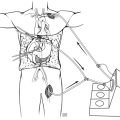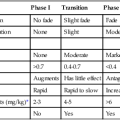Hair loss can be a distressing experience, and the underlying cause can sometimes be puzzling.
If you’re noticing gradual thinning or patchy hair loss, particularly on the scalp, scalp irritation, and unusual hair growth patterns, you might be dealing with lichen planopilaris (LPP). While there’s no cure, understanding this inflammatory condition and available treatments can empower you to manage hair loss and maintain scalp health.
What is Lichen Planopilaris?
Lichen planopilaris is an autoimmune disorder that targets the hair follicles, causing inflammation and scarring. The exact cause remains unknown, but it’s believed to be triggered by a combination of genetic predisposition and environmental factors. LPP can affect people of all ages, but it’s more common in adults between 30 and 60.
Symptoms to Watch Out For:
The signs of LPP can vary from person to person, but some common ones include:
- Gradual thinning of hair, often starting at the crown or the hairline
- Patchy hair loss, sometimes with complete bald spots (especially in severe cases)
- Burning or stinging sensation on the scalp
- Scalp redness, inflammation, and scaling ● Difficulty styling hair due to changes in hair
Understanding The Battle Within
In LPP, the immune system mistakenly attacks the hair follicles, leading to inflammation and scarring. This disrupts the normal hair growth cycle, causing hair loss and affecting hair quality.
The inflammatory process can also cause redness, burning, and discomfort on the scalp.
Treatment Strategies for LPP
While there’s no permanent cure for LPP, treatment focuses on managing inflammation, reducing hair loss, and promoting hair regrowth. Here are some common approaches:
- Corticosteroid injections or creams: These medications directly target inflammation in the scalp to reduce irritation and scarring.
- Minoxidil: This topical medication helps stimulate hair growth and may be beneficial in some cases of LPP.
- Immunosuppressant medications: In severe cases, medications that suppress the immune system might be prescribed to control the inflammatory response.
- Antibiotics (in some cases): If there’s a secondary bacterial infection on the scalp, antibiotics may be needed.
- Phototherapy: Ultraviolet light therapy can sometimes be helpful in reducing inflammation.
Living With Lichen Planopilaris
LPP can be a frustrating condition, but it’s important to remember you’re not alone. Here are some tips for managing LPP and maintaining scalp health:
- Seek professional guidance: Consult a dermatologist for proper diagnosis and treatment planning.
- Manage stress: Stress can worsen LPP symptoms. Practice relaxation techniques like yoga or meditation.
- Gentle hair care: Use a mild shampoo and avoid harsh styling products that can irritate the scalp.
- Scalp protection: Wear hats to protect your scalp from sun exposure, as UV rays can exacerbate inflammation.
- Support groups: Connecting with others who understand LPP can provide emotional support and share experiences.
Lichen planopilaris can be a challenging condition, but with proper diagnosis, treatment, and lifestyle adjustments, you can manage hair loss and maintain scalp health. Remember, early intervention is key, so if you notice any concerning symptoms, consult your dermatologist for a personalized treatment plan.
By working with your doctor and adopting self-care strategies, you can navigate this inflammatory battle and achieve a sense of control over your hair loss journey.
Hair loss can be devastating, but the professionals at Wig Medical can help. Their expert team is dedicated to providing personalized advanced solutions. Contact a member of their team today to schedule an evaluation!




